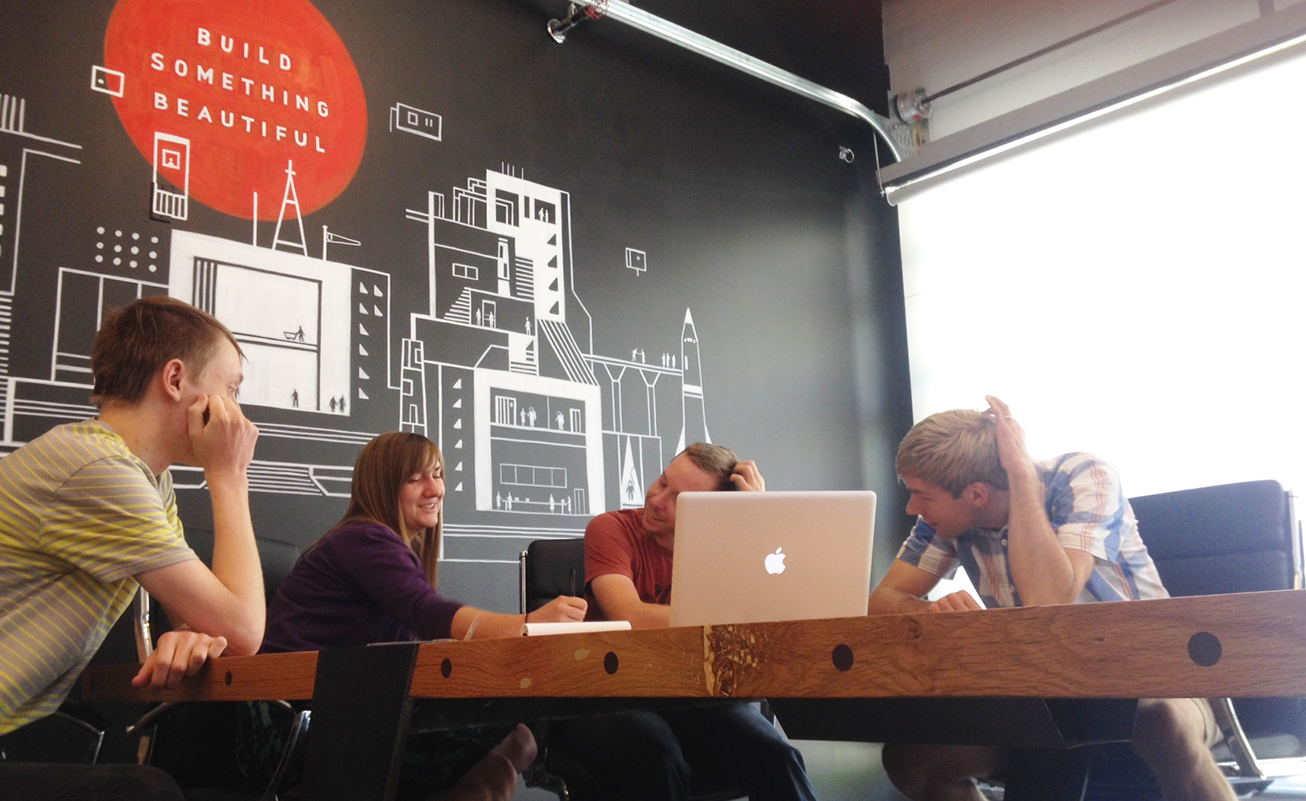
_Part 1 of 4 in the series, The Anti-Handoff: A Better Design & Front-end Relationship_
Design
Process
Back in my day…
Like many web designers at the time, I came to working on the web from a print background. When a design process was underway I poured over the tiniest of details, arguing over font stacks, making sure that my 800px width view frame was perfect and elegantly rendered regardless of web conventions, all of which created plenty of headaches for my front-end team. Ten years down the road, it’s amazing to see how much the web has changed, but we're still coming across familiar headaches. If we're going to minimize them, how we work together has to change too. In today’s world, we need to be quicker and achieve clarity sooner than we ever have before. It doesn’t mean that we need to be brilliant out of the gate… nor does it mean we have to cut ideation time, it just means that we need to remove the process roadblocks so we can actually do some work. There are myriad ways to attack the process problem. The one I’d like to focus on right now is how to best collaborate with front-end. I constantly think about how we can improve our process so that design and development can more seamlessly transition in as lean a way as possible. We’ve come up with a four part plan that works for us; part one we’re going to discuss in this first post.Part 1: Dissolving Ambiguity
We all know it well. Projects start off with the best of intentions. Then, somewhere along the way, miscommunication and confusion creep in and things start to veer down a slippery slope. Team members switch in and out, context gets muddled, information gets lost in the shuffle, the list goes on and on… All these problems can damage the flow of the work we do. So, how do we avoid this? In this first segment, we’ll discuss how to start your project off strong to lay the groundwork for clear communication.Identifying the Team
This probably needs no real clarification, but I cannot stress this enough: Figure. Out. Who. Is. On. Your. Team. You need a solid, steady group of team members to weigh in at various touchpoints throughout the project to make sure everyone is on the same page. It’s really as simple as that. Some projects will take weeks, others months or even longer. As projects stretch out into longer timeframes, it’s only natural that team members will come and go. If this is unavoidable, make sure that the best representative from each discipline is identified and kept up to speed.Getting Involved
Once you’ve identified your team, establish the project plan and determine how the team is going to collaborate through each phase of the project. Do this together. Establish each team member's level of involvement in each phase. Also, make sure there's a central place for communication that allows team members to participate asynchronously. We use Basecamp but there are a number of great project management tools out there. You can even use e-mail if you're organized, just make sure that you clearly state the nature of the message in header. Labeling the titles of your messages with project tags/job codes helps a lot. Setting up these conventions at the beginning can save you from from a lot of problems down the road.Defining Touchpoints
Getting people involved early shouldn’t be a waste of time or budget. This doesn’t mean that every member is in every meeting, stakeholders call or workshop session. In fact, it means that the team decides how and when they need to communicate, judiciously. As stated earlier, asynchronous communication can be achieved through clearly defined email subject lines and project management software, like Basecamp. This type of communication lends itself well to keeping members up-to-date on less time sensitive topics, taking minimal time away from other projects. Real-time communication is just as important and can be determined on an as needed basis through small, agenda focused stand-ups. The idea here is to define when team members need to be brought in and when they don’t without too much back and forth. If ten minutes of face-to-face communication can save you a couple hours of wading through something that doesn’t make sense, it’s worth it. This was a broader topic than what we'll cover in the following posts, but these steps are vital in laying the foundation of a successful project. Once you have a transparent and clear plan to start with, you can make concessions for those curveballs that inevitably get thrown into the mix. Next time, we’ll talk about design/UX tools that can help tighten and streamline your process for delivery to your front-end friend.Read This Next
- Website Design Audits: The Secret to Sustained Impact
- Celebrating Science: A New Logo & Identity for Sanford Lab’s Annual Science Festival
- 6 UX Exercises to Keep Users at the Center of your Website Redesign
- 6 Guidelines for Accessible Website Design
- Design and User Strategy Workshops Lead to Peak Performance for the City of Boulder’s New Site
Skip to footer
Comments